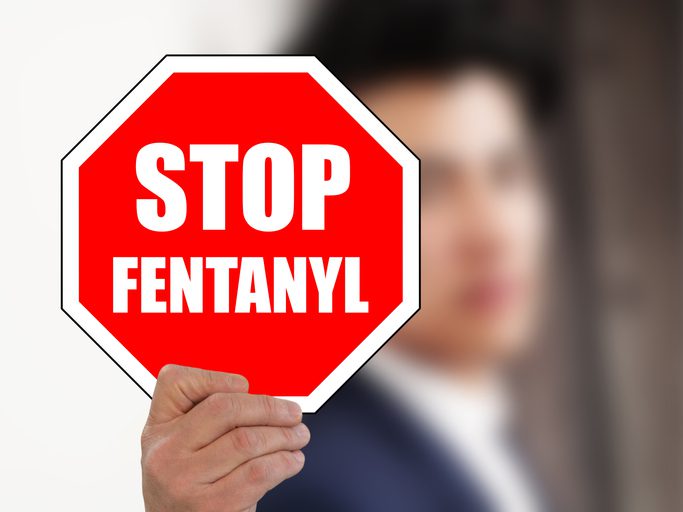Across the country, fentanyl has become an epidemic, including in Iowa. In May 2023, television news station KWWL reported that more than 80 percent of opioid-related deaths in 2021–2022 involved fentanyl, according to the Iowa Department of Health and Human Services. Also in May 2023, the Des Moines Register indicated that nearly 30 Iowans were linked to Mexican drug cartels operating a large Midwestern drug operation pushing fentanyl and methamphetamines. Understanding fentanyl addiction and treatment is a major priority as use of this powerful opioid continues a deadly rise.
What Is Fentanyl?
Fentanyl is a potent synthetic opioid medication commonly used for pain management, particularly for severe conditions such as after surgery or in cases of chronic pain. Considered 100 times stronger than morphine, fentanyl was initially classified by the U.S. Drug Enforcement Agency (DEA) as a Schedule II narcotic due to its high potential for abuse and risk of dependence. However, because of the alarming influx of illicit fentanyl and other drugs laced with it, the DEA recategorized the drug as a Schedule I controlled substance in early 2023 under the Halt Fentanyl Act, which defines the drug as “having a high potential for abuse; has no currently accepted medical value; and is subject to regulatory controls and administrative, civil, and criminal penalties under the Controlled Substances Act.” Illicitly produced fentanyl, often made in clandestine labs, is sometimes mixed with other drugs like cocaine, heroin, and counterfeit prescription drugs such as Percocet. Once taken, it can result in unintentional overdose and death due to its high potency.Why Is Fentanyl Dangerous?
Fentanyl works by binding to opioid receptors in the brain and spinal cord, which reduces the perception of pain and produces feelings of euphoria and relaxation. Since it’s much stronger than other opioids like morphine and oxycodone, even a small amount of fentanyl can have a significant effect. The drug is considered dangerous for several other reasons:- Narrow therapeutic window. This refers to the range of doses between the amount that provides therapeutic effects and the amount that causes toxicity. Fentanyl’s narrow therapeutic window means that the difference between a therapeutic dose and a lethal dose is very small, increasing the risk of overdose, especially when it’s not used as prescribed.
- Rapid onset and short duration. The drug acts quickly in the body, but its effects also wear off relatively soon. This can lead to a cycle of repeated dosing, increasing the risk of fentanyl addiction—or overdose.
- Tolerance and dependence. Prolonged use of fentanyl, even under medical supervision, can lead to tolerance (needing higher doses to achieve the same effect) and physical dependence (experiencing withdrawal symptoms if use is stopped abruptly).
- Risk of respiratory depression. Like other opioids, fentanyl can cause respiratory depression, where breathing becomes slow and shallow. In cases of overdose, this can lead to a lack of oxygen in the body, which can be fatal.
- Easy to accidentally overdose. Even for individuals trying to use fentanyl safely, it can be easy to inadvertently take too much due to its potency and the difficulty of accurately measuring such small doses.
- Difficult to reverse overdose. While opioid overdoses can often be reversed with naloxone (Narcan), due to fentanyl’s potency, higher doses of naloxone or multiple administrations may be required to counteract its effects, making it more challenging to save a person’s life.
Fentanyl Addiction Treatment
Depending on the level of addiction, the first stage of fentanyl treatment might be medically supervised detoxification. A detox may be the best option for individuals who are currently under the influence or already in withdrawal. Detoxification might also be necessary if someone has cognitive or emotional impairment and needs a period of stabilization and emotional preparation before beginning recovery treatment. Fentanyl withdrawal symptoms vary considerably based on the level of dependency, overall mental and physical health, and other factors. According to the Clinical Guidelines for Withdrawal Management and Treatment of Drug Dependence in Closed Settings, opiate withdrawal symptoms include, but aren’t limited to:- Anxiety
- Diarrhea
- Hot and cold flushes
- Insomnia
- Perspiration
- Muscle cramps
- Nausea and vomiting
- Watery discharge from eyes and nose
- Individual, group, and family therapy sessions
- Trauma-informed care
- 12-Step recovery, community-based meetings
- Early recovery skills development
- Whole-body wellness with a focus on recreation and nutrition







